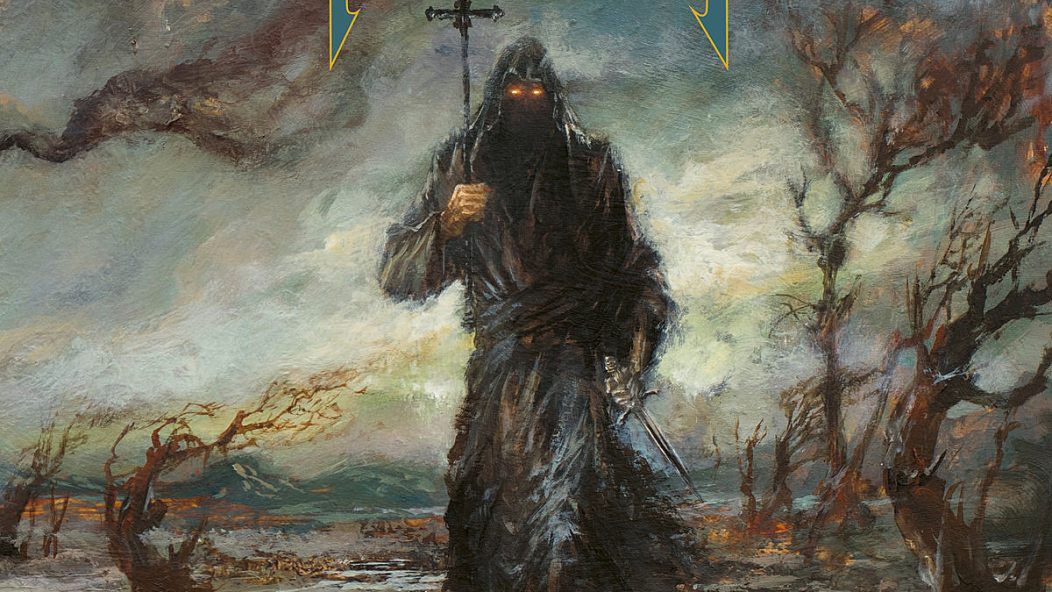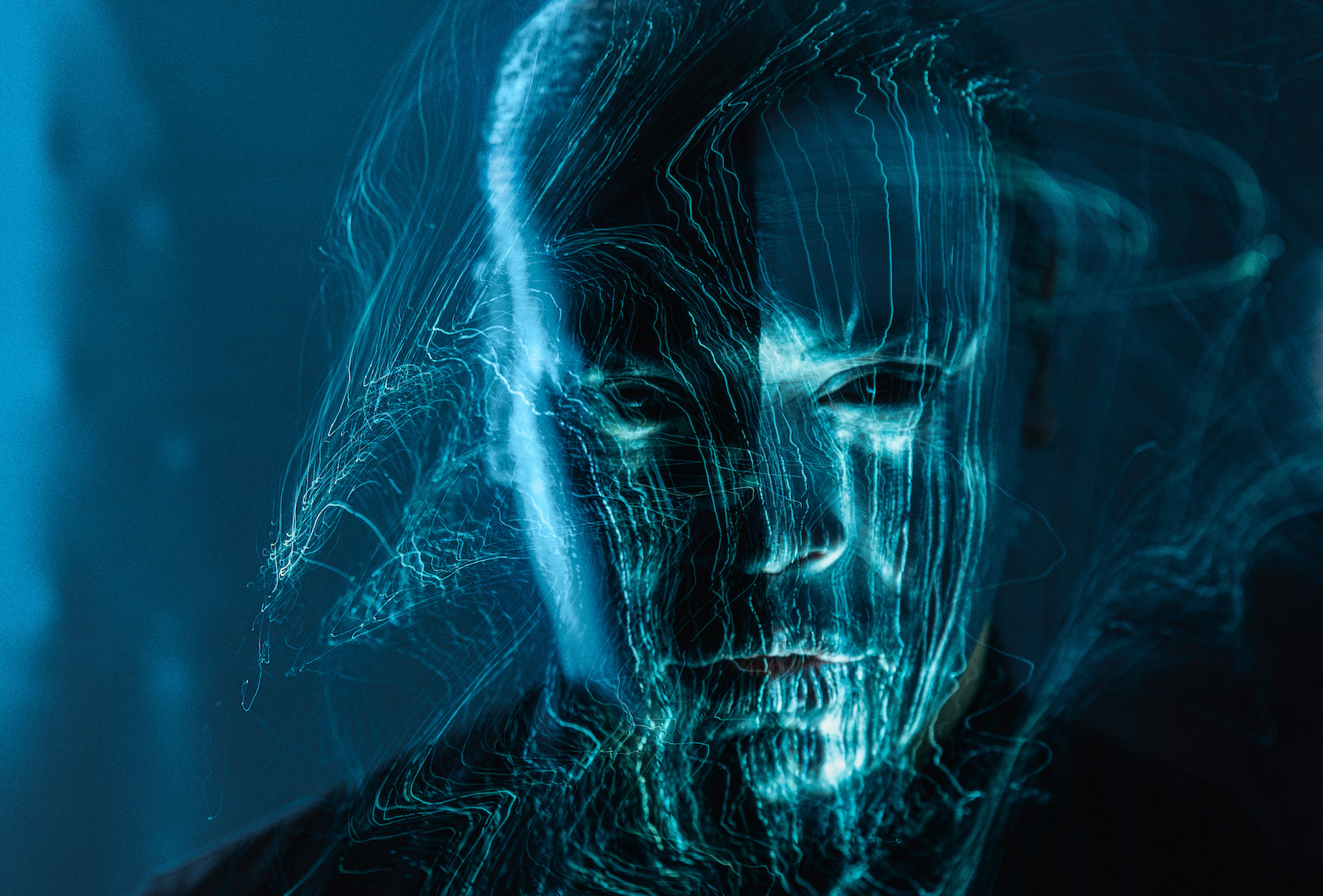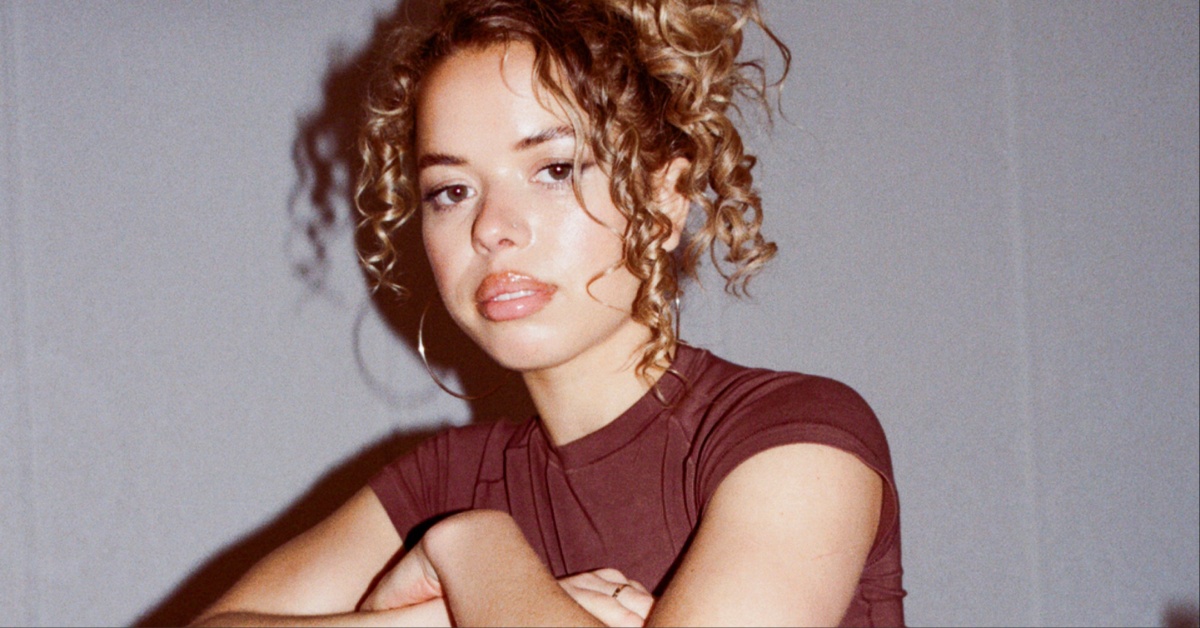
"At One With None": Portrait's Powerful Heavy Metal Remains Peerless (Interview with Guitarist Christian Lindell)
One of the best and most consistent bands in heavy metal, Sweden’s Portrait started more than fifteen years ago and immediately established themselves as titans of the genre. Youth and a lack of interest in sticking to established waters could not hold the band back, and by their second album they had signed to the legendary Metal Blade Records label. Since then, each album has further refined their personal approach to heavy metal—and now Portrait, though noticeably still the same band they were with their debut in 2008, have arrived at a place where their sound cannot be mistaken for anyone else.
Much of the meat of At One With None revolves around mid-paced riffs and hypnotic song structures that rely as much on repetition to build atmosphere as they do on vocalist Per Karlsson’s mesmerizing croon. The songs whirl through unpredictable riff changes without ever diverging significantly from a core of sharp, almost mystical riffing; even when the band speeds up and gets a bit more aggressive on songs like “He Who Stands,” their aggression is tempered by changes into clean guitars or goth-laden sections of beauty.
A weaker band could not pull off the blend of approaches and musical styles that Portrait put together, but their top-notch songwriting ability and mastery of heavy metal are undeniable. One approach that stands out more than on past records is modulating riffs that change keys or tempos rather than changing riffs entirely, which allows the band to control the mood of a song with more precision than if they circled relentlessly from riff to riff. A song might have less individual riffs than on some previous Portrait records, but the quality of each riff is so high that the difference is only noticeable via repeated listening, and crescendos of drumming and vocal lines allow the record to remain fresh at each and every point.
Many comparisons have been made in the past between Portrait’s approach and Mercyful Fate, and despite how far Portrait have gone in developing their own sound the comparison remains apt—albeit not in the expected ways. A common technique that Portrait uses to change between disparate riffs is to have drums drop out at a particularly abrupt shift, and the combination of theatrical, emotional vocals and those sharper, winding structures certainly calls back to the greats. This is perhaps the most unique Portrait release yet, however, and the comparisons to bands like Mercyful Fate or even to countrymen such as In Solitude are mostly surface level; as always, Portrait follow their own path, and that path is as bright and glorious today as ever.
Read below for an interview with Christian Lindell discussing the new record, and go buy a copy—you won’t regret it.
…
…
A tendency of Portrait’s songwriting on this album that I’ve noticed is modulating a riff with a key change and tempo variation instead of moving to an entirely new riff, such as in “Ashen.” When did you first realize how effective that technique is?
It has probably been in the subconscious or back of the head for a long time, but one moment that I remember was when listening to “At dawn They Sleep” by Slayer about 5 years ago or so, in which they use that technique as well. I was later “intentionally” inspired by that approach when we wrote the song “Mine To Reap” on the Burn the World album. Dissection did the same in a lot of songs, for example the verses of In the cold winds of nowhere and the variations between the choruses in Soulreaper can be mentioned. And the chorus riff/melodies in Night’s blood also for that matter, with the changes in the rhythm section over the same riff. A change of beat/rhythm or tempo to the same riff can indeed become very effective.
Do songwriting tools like this ever become something that you overthink, or does active knowledge of how you approach things not change anything?
No, we seldom overthink things like that. The inspiration always comes by itself, as if channeled from within. What takes time sometimes are the song arrangements. One needs the time to test things out and listen properly before deciding on the final cut, especially with the longer songs. Interestingly enough, I read that Iron Maiden do it the other way around. They want to record their albums as soon as possible after the music has been written, in order to keep it fresh in mind. Perhaps we will also do things that way, ten albums from now…
What’s the fastest that you’ve ever put together a final-version Portrait song, given that?
I can’t say for sure, but “Phantom Fathomer” is definitely one of them. It was written in a couple of hours. Maybe some small change was made in the arrangement later on, but nothing big.
Much of the album is composed of rather hypnotic repeating rhythm guitar sections that don’t bite as much as they lull. Does that conscious creation of atmosphere play a large part in your process when putting together new Portrait material?
Yes, the kind of atmosphere created by such approaches is a big part of our sound and one of the things that makes us stand out among other contemporary heavy metal bands. There is a lot of that on the new album, I agree. More so than on the Burn the world album. This is not something that we think too much about during the actual song writing process though, it all comes very naturally and this time the inspiration that came to us moved in that particular direction. I guess it is one of the main differences musically compared to the previous album. Burn the World had more intense and aggressive parts while At One with None has a bit more… melodic approach? It’s all up to the listener to judge of course, but what I am most satisfied with is that we have again created something that we feel proud of without repeating ourselves, but still keeping the Portrait essence there.
Did you go into At One with None with any specific goals in terms of melodicism or atmosphere that you feel you met?
Not really. As mentioned above much of this comes by itself. That is the way it has to be, as soon as you need to put pressure on yourself to find musical inspiration something is wrong. Maybe some of the older bands should think about that. It is so transparent and bad when old bands try to get “back to the roots” and do what they did 30 years ago. Not to mention the bands who base tours on “Special 40th anniversary of the debut album set”. It is pathetic. Do something new that is relevant instead.
Do you have that problem with older bands doing older special sets all the time, or just when their material has grown stale? Are things like the King Diamond “Abigail” tour the other year ever okay?
I can’t really say I was crying in disappointment when watching that “Abigail” tour. It was great of course, and a bit different also when you have this whole concept story etc. But, King Diamond has done so many great albums and in a live situation I myself would prefer to hear stuff like “Moonlight”, “Black Devil” or “Waiting” over any of the Abigail songs. But again, doing such tours is still a bit different when you have these story concept that makes for a nice stage show and so on.
The digital release seems to come with two bonus tracks that collectively total about ten minutes of playtime. What are those songs, and why use them as bonus tracks rather than as a standalone 7” single or alternate release?
We recorded 11 songs and had not really decided which ones to include on the album prior to the recording. We are satisfied with all of them, but the two you mention, “The blood is the Life” and “Farewell to the Flesh” is closely connected lyrically and fits well together as a bonus 7″ to come with the box set version of the album. It just felt right to exclude them from the album and release them separately instead. Sure, we could have released separate 7″ singles also but with these two it felt better to include together with the album, being from the same recording sessions and all. They will be on a 7″ in the box version and also on the digital release on streaming services etc.
Another song, “The Passions of Sophia”, was recorded as well and we will see when to release it. It is a long epic song, about 10 minutes I think.
The reason why all songs aren’t included on the album is that we want to stick to a single vinyl album and not a 2-LP. Around 50 minutes playing time is perfect in our opinion.
Do you ever write songs with specific arrangement goals for the overall construction of an album, or does the band usually just write a bunch of songs and decide afterwards how they’ll go together like you did this time?
We just write the songs and let our intuition guide us. We instinctively feel when we have enough material to start the recording process. When we feel that we have enough different musical expressions to let the Portrait essence manifest through, we know that the album is done.
This is now your fourth record with Metal Blade Records. Do you see the band continuing on with them when your contract is over, if it’s not already? Has it been a good few years with them?
Yes, we signed a new deal with them for this album. The first deal was for three albums, and so is the new one. So yeah, we are satisfied with the cooperation so far and we expect nothing less for the two upcoming albums!
Several other members of the band fill their time with other side-bands, but as close as I can tell you focus mostly on Portrait, as does Anders. Do you think there’s any advantage to staying busy with other bands or do you prefer your own approach?
I won’t say that I never will have any other band or project. There has been ideas of course, but the thing is that everything that I want to express through music can be done through Portrait, so I don’t really know why I should do anything else. I put so much into Portrait also, so if I would have some other band going on as well it would probably become half-hearted in one way or the other. But on the other hand it is always good to rehearse with other, get experience on stage and so on. Having other bands going on is not something I think is missing in my life, but I have no problems with the others having their things on the side of course.
What’s next for Portrait?
We will be doing some Swedish shows during the autumn and winter, then hopefully be able to tour other countries as well some time next year. The live scene situation is of course horrible with all these restrictions everywhere, but we won’t give in.
…
At One With None releases September 3rd via Metal Blade Records.










